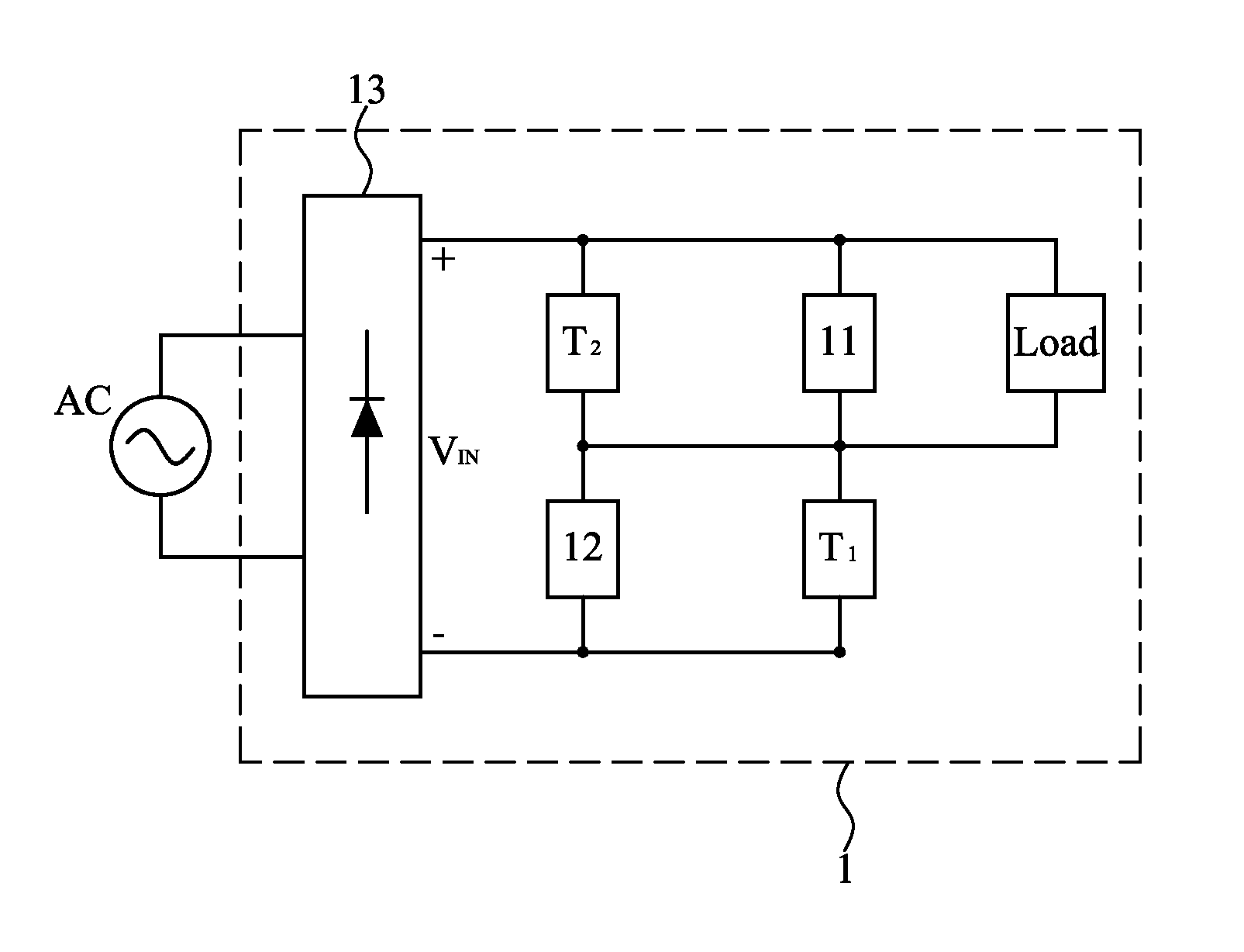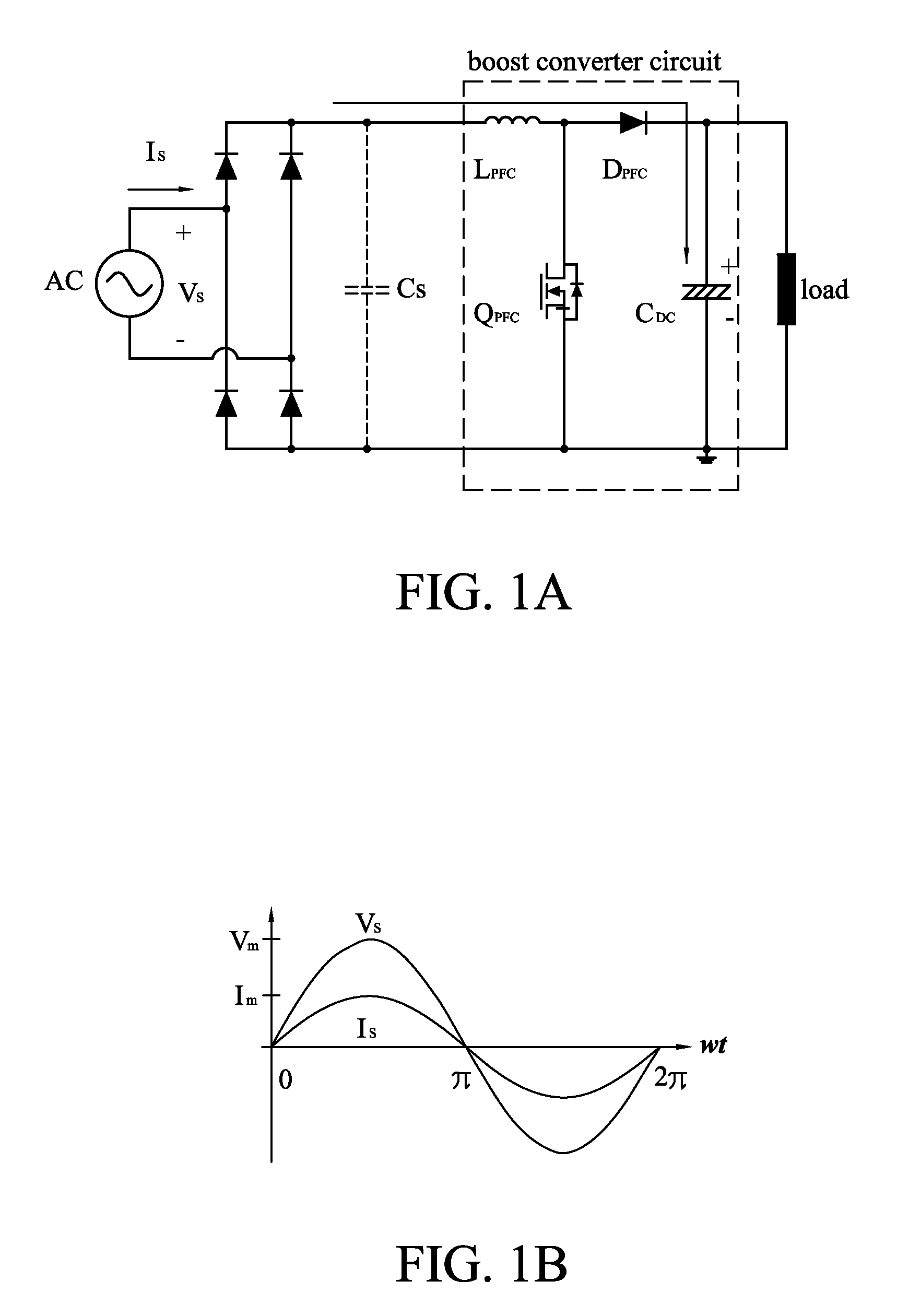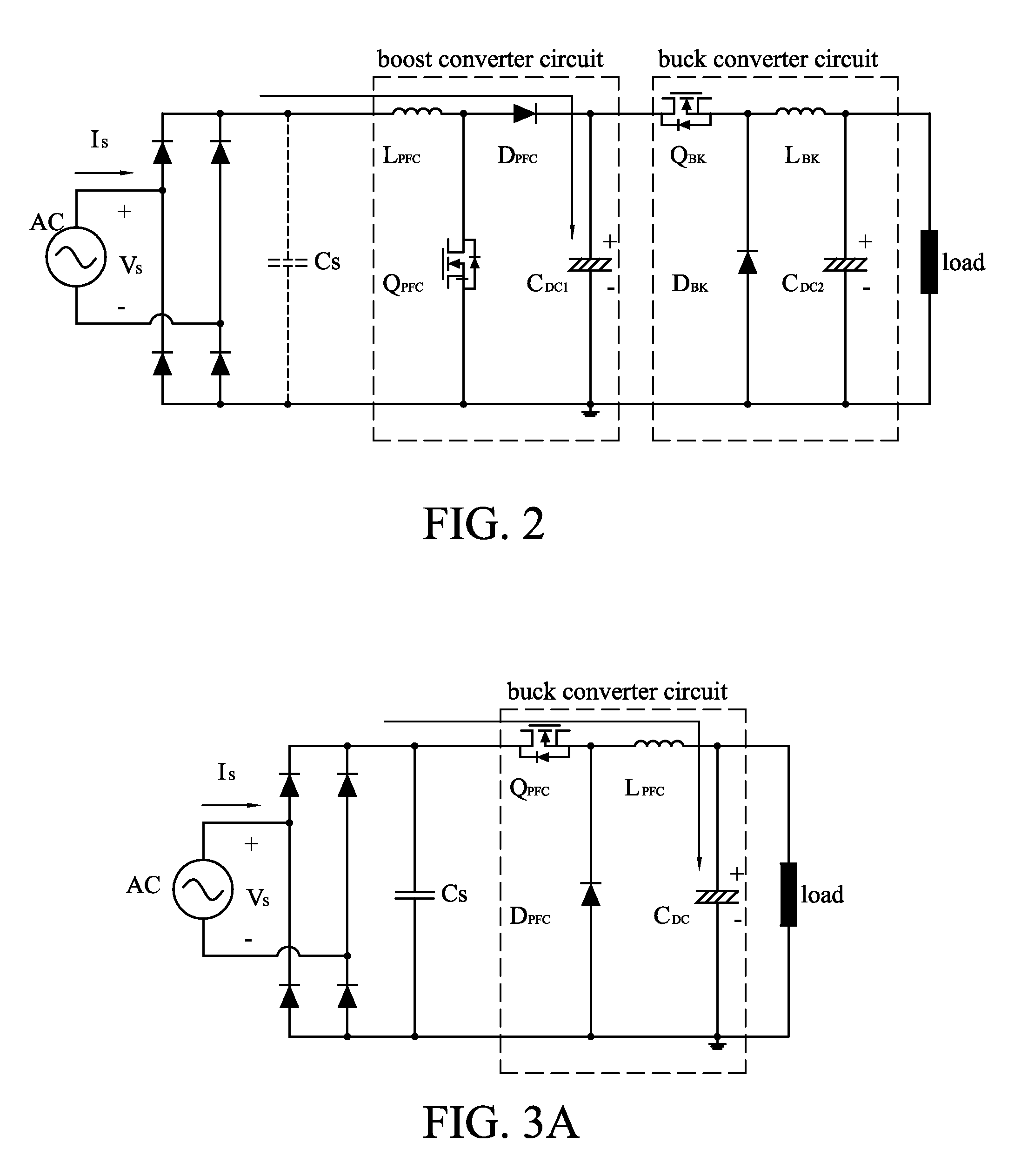Buck power factor correction system
- Summary
- Abstract
- Description
- Claims
- Application Information
AI Technical Summary
Benefits of technology
Problems solved by technology
Method used
Image
Examples
Embodiment Construction
[0029]Details of structures and concepts of the present invention shall be illustrated with embodiments below to give a better understanding on characteristics, objects and functions of the present invention.
[0030]Refer to FIG. 8 showing a buck power factor correction system 1 according to an embodiment of the present invention. The buck power factor correction system 1 comprises: a first storing device 11, a first converter device T1, a second storing device 12, and a second converter device T2. The first storing device 11 is for storing and discharging energy. The first converter device T1 is coupled to the first storing device 11 is for transferring and converting energy. The second storing device 12 is coupled to the first storing device 11 is for storing and discharging energy. The second converter device T2 is coupled to the second storing device 12 is for transferring and converting energy. The buck power factor correction system 1 further comprises a rectifying device 13 and...
PUM
 Login to View More
Login to View More Abstract
Description
Claims
Application Information
 Login to View More
Login to View More - R&D
- Intellectual Property
- Life Sciences
- Materials
- Tech Scout
- Unparalleled Data Quality
- Higher Quality Content
- 60% Fewer Hallucinations
Browse by: Latest US Patents, China's latest patents, Technical Efficacy Thesaurus, Application Domain, Technology Topic, Popular Technical Reports.
© 2025 PatSnap. All rights reserved.Legal|Privacy policy|Modern Slavery Act Transparency Statement|Sitemap|About US| Contact US: help@patsnap.com



